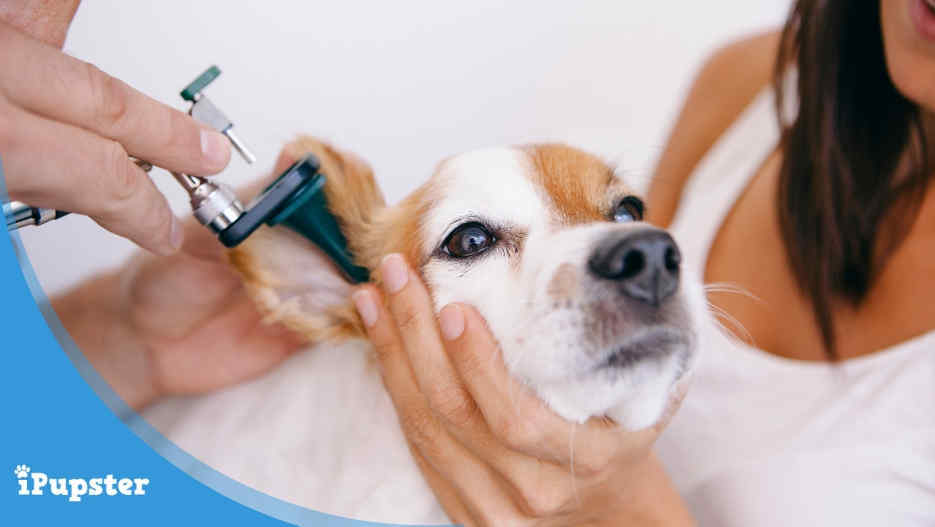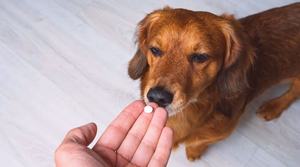
Reviewed & Fact-Checked by
Dr. Chyrle Bonk
Veterinarian (DVM)
Learn more about our Veterinary Review Board »
Whether they stick straight up or flop down, there’s just something about dog ears. As humans, we love the look of them, but for our dogs, they serve many important functions.
Keeping our dogs ears as healthy as possible requires knowing what conditions can cause problems.
One such condition is an ear, or aural hematoma.
What is Aural Hematoma?
In very basic terms, an ear hematoma is a pocket of pooled blood that forms in the soft flesh of the ear flap, between the cartilage and the skin.
It can occur in cats as well as dogs, but is more commonly seen in pups, especially those with larger, and floppier, ears.
An ear hematoma is not always immediately visible and may not even cause too much pain or irritation at first but it should still be addressed as soon as possible.
What Causes Ear Hematoma in Dogs?
In most cases an ear hematoma is the result of some form of self-injury. They can occur when a pup scratches her ear too vigorously, snags it with a sharp claw, or when they shake their head a little too hard.
These actions can injure the blood vessels in the ear, disrupting the natural flow of blood. This forces some blood to pool up within the gap that exists between the ear cartilage and the skin that covers it.
These pockets of blood vary in size, and even in color. Larger hematomas can be incredibly painful, causing a dog to shake their head even more. They may feel warm to the touch.
There is often an underlying cause of ear hematomas that need to be addressed as well.
Anything that causes a dog to shake their head or scratch their ear excessively can lead to a hematoma. Common conditions that may result in an ear hematoma include ear infections, ear mites and various irritating skin conditions.
Are Certain Breeds More Susceptible to Ear Hematomas Than Others?

Dogs with long, floppy ears like Basset Hounds are more susceptible to getting aural hematomas.
An aural hematoma can affect any dog - or cat - but those dogs with larger, more pendulous ears are often at a greater risk. This is true, not just for ear hematomas but for the underlying causes we just mentioned as well.
Breeds like Basset Hounds, Beagles, Spaniels, Bloodhounds and dogs known for their larger, floppier ears tend to be more prone to ear canal infections as those big ear flaps hold in moisture allowing bacterial and fungal growth.
How Can I Tell If My Dog Has An Ear Hematoma?
Visually an ear hematoma usually presents a fluid filled bubble in or on the ear flap. The swelling may be hard to the touch or it may be softer and more malleable.
These swellings can be small and barely noticeable, or quite large, encompassing the entire pinnae. The skin may be reddish-purple, especially lighter colored dogs.
Most dogs with an aural hematoma will also shake their head and whine. Their ears may feel hot and there may be discharge or a foul smell if they have an ear infection.
How Is Aural Hematoma Treated?
Avoid the temptation to squeeze the bubble or to over aggressively clean the ears causing it to rupture. Instead, you should head to your vet where they will be able to diagnose it quickly.
Since ear hematomas are often painful, your vet will choose to treat the aural hematoma itself with a small surgical procedure. This requires putting your dog under anesthesia, lancing the skin to drain and remove the blood and debris.
The skin will then be stitched to the cartillage to prevent recurrence and the ear will be bandaged close to the dog's head to keep them from shaking it.
In addition to deciding the best way to treat the ear hematoma itself, your vet will also be looking to diagnose and treat the underlying cause. This may include cleaning the ears and applying medications for ear infections, medications to treat ear mites, or allergy testing.
Ear hematomas can go away on their own. The body will resorb the fluid and the skin will heal, but this can take a lot of time and dogs tend to keep reinjuring the area if the underlying cause isn’t treated. Allowing ear hematomas to heal on their own can also lead to a lot of pain and scarring of the ear flap.
Recovery and Prevention
Most pups recover well from ear hematoma treatment. While you may not be able to completely prevent the condition from returning there is quite a lot you can do to minimize the risk.
Get into the habit of checking your pup's ears regularly for irritation or abnormal discharge. This is especially important for dogs with big, floppy ears.
Clean your dogs ears periodically, especially after they’ve had a bath or been in the water.
Cleaning a dog's ears is not always easy, but it can be done. One of the easiest ways is to soak cotton balls in ear wash - and gently wipe out the ear canal. You can enlist the help of someone who can help hold your dog and give them lots of praise or treats for a job well done.
If allergens were discovered to be an irritating factor then you will need to make changes to address that too. And if a skin condition like allergic dermatitis is present that will often be best treated by a canine dermatologist.




